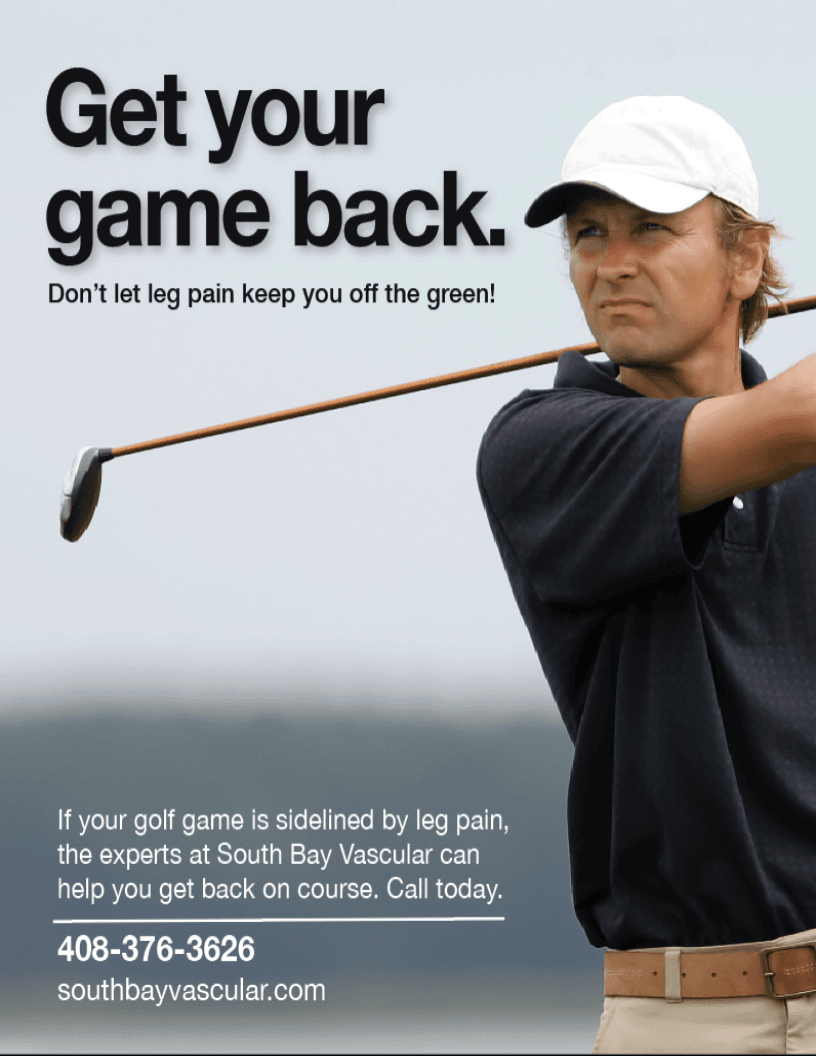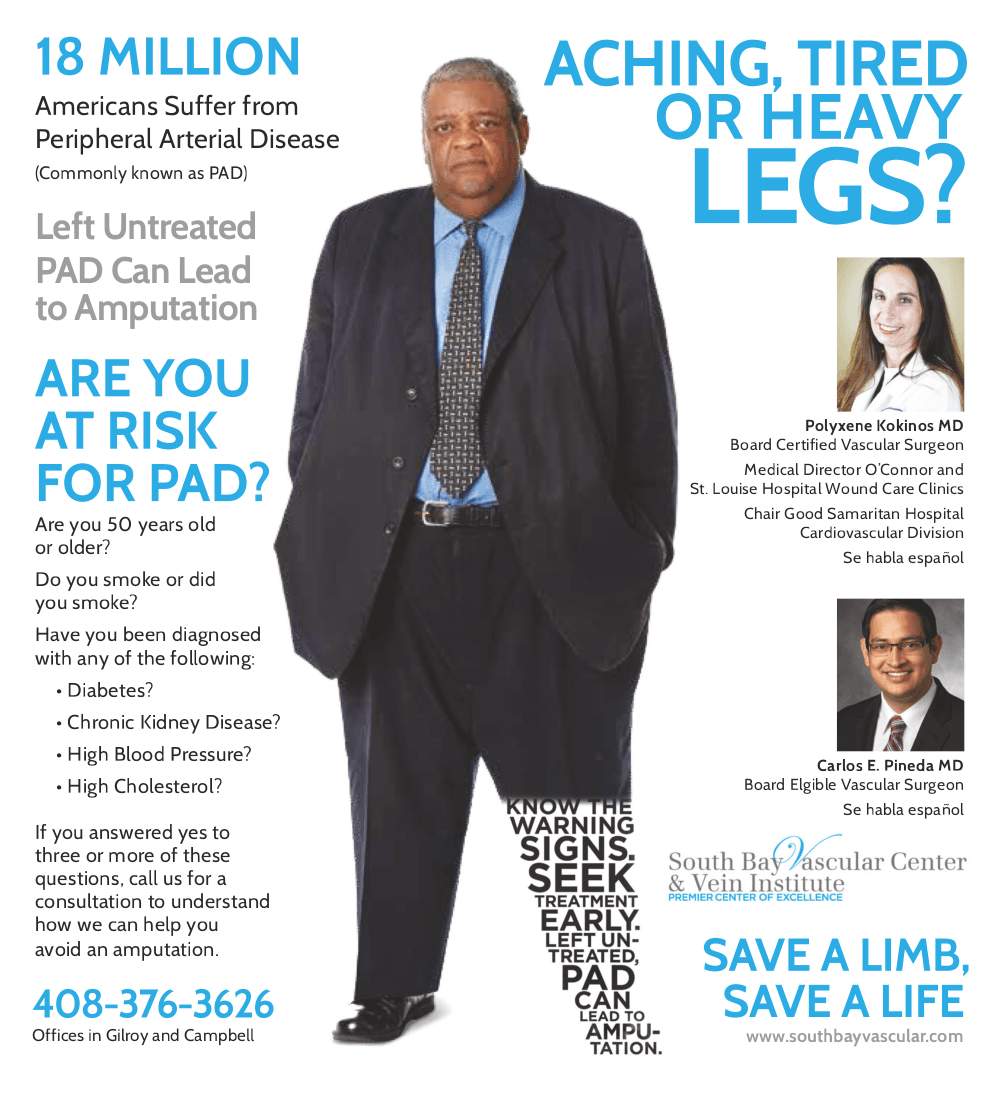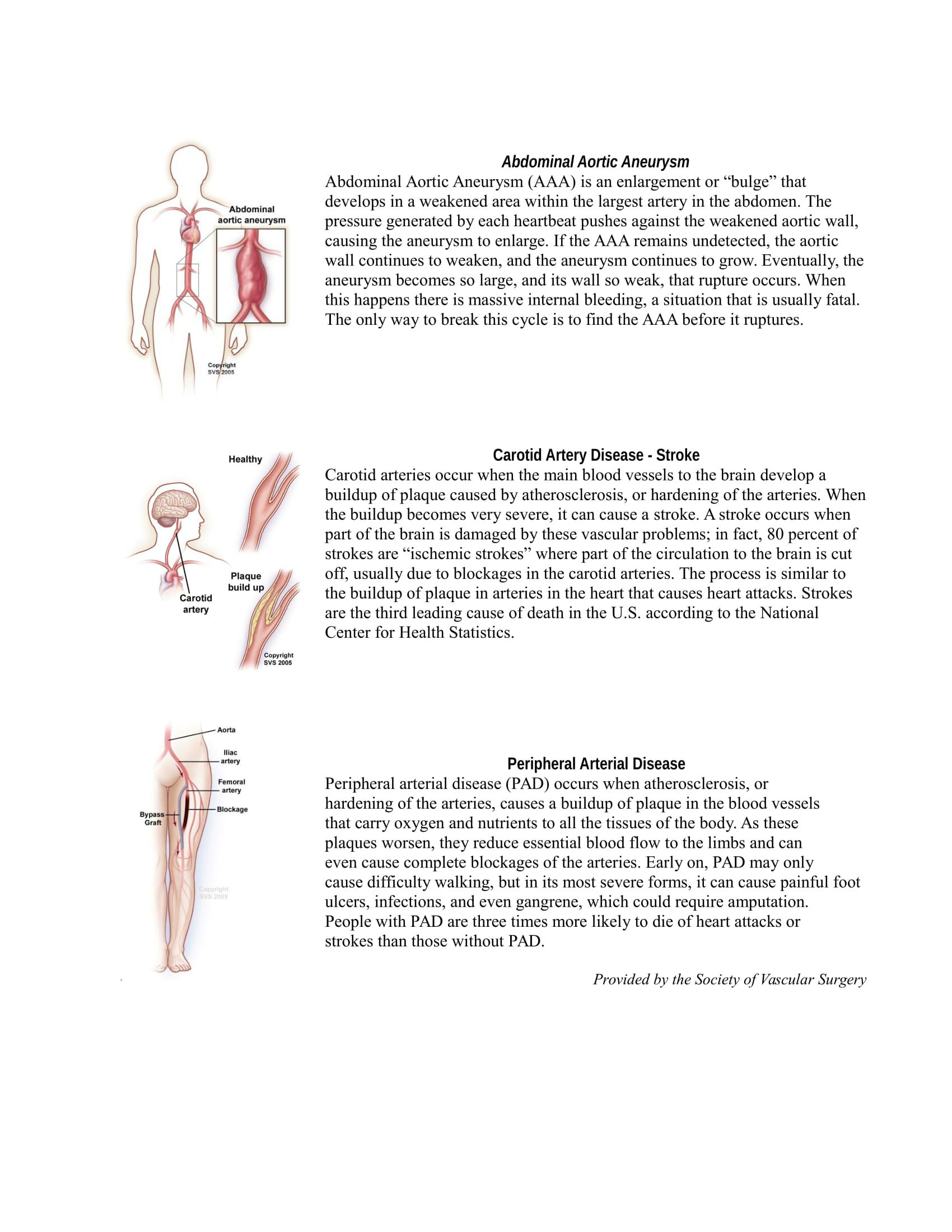According to the U.S. Centers for Disease Control and Prevention (CDC), approximately 18 million people in the United States suffer from Peripheral Artery Disease (PAD), a common circulatory problem in which narrowed arteries reduce blood flow to the limbs. Estimates suggest that anywhere from 12 to 20 percent of individuals over the age of 60 are living with PAD. Approximately 160,000 to 180,000 of the estimated 18 million Americans with PAD will undergo a limb amputation as result of PAD-related condition this year, resulting in lower quality of life, high medical costs, and shorter life expectancy.
But even with these alarming numbers, APPROXIMATELY 3 OUT OF 4 AMERICANS are unaware of PAD Symptoms.
Severe PAD symptoms include:
- Leg pain,
- Wounds on the toes or feet,
- Gangrene and
- A loss of leg mass compared to the rest of the body.
- Individuals are at greatest risk for PAD if you have high cholesterol, high blood pressure, or diabetes.
Dr. Polly G Kokinos, a board certified Vascular and General Surgeon in Campbell, CA. is recognized as one of the regions foremost authorities in the diagnosis and treatment of PAD. With offices in both Campbell and Gilroy, CA. Dr Kokinos has dedicated her entire career to serving the South County community as an independent physician and as a pioneer in the evaluation and treatment of patients suffering from Peripheral Arterial Disease.
Unburdened by the productivity metrics, financial benchmarks and administrative red tape commonly found in Big Box Medical Systems, Dr. Kokinos has focused her entire career on providing exceptional vascular care building her practice one patient at a time. Her Campbell Surgery center, a nationally accredited Vascular Surgery Center of Excellence, is entirely dedicated to treating patients suffering from complex vascular surgical disorders. Unlike a traditional hospital or university operating room, Dr. Kokinos’ surgery center is entirely dedicated to addressing vascular issues ensuring that she has the most advanced imaging and device technology available anywhere in the world.
Unfortunately, even with all of her skill experience and technology, many patients don’t find Dr. Kokinos until its too late. Many patients go under diagnosed or undiagnosed until it is too late and their medical condition has declined to the point where no one can help. In this circumstance patients lose limbs, suffer unnecessarily and become an incredible burden on their family and loved ones. In the worst cases, patients can die if their leg wounds are left untreated.
In an effort to help front line medical doctors better evaluate and diagnose peripheral arterial disease Dr. Kokinos has spoken extensively to the Primary Community Care Team (Internists, Podiatrists, Orthopaedic Surgeons) in the management of lower extremity arterial and venous disease. As is the case in most instances, early detection of peripheral arterial disease has a dramatic impact on the success of any future treatments.
Bridging this educational gap was the topic of a recent talk Dr. Kokinos was honored to give in March of 2020 to a group of Northern California primary care physicians. The focus of this talk was to help primary care and referring physicians better understand the etiology (the cause of a disease or condition) its diagnosis, management, and referral strategies for peripheral arterial and venous disease.
The key takeaways from her talk are outlined below:
- Prevalence of PAD and Venous Disease have reached epidemic proportions.
- Peripheral Arterial and Venous Disease are both associated with high rates of disability and death.
- Identifying arterial disease early may improve a patients quality of life and allow early medical and surgical interventions to lower the risk of critical limb ischemia and amputation.
- Identifying venous disease can greatly improve a patients quality of live and lower their risk of dying from this disease.
- Despite greater awareness, PAD and Venous disease are still under-recognized and under treated.
- Due to the complex nature of vascular disease, an evidence-based multidisciplinary approach is essential to early assessment, proper diagnosis and optimal treatment
- Minimally invasive endovascular techniques now enable vascular surgeons to treat significantly higher numbers of patients with a lower complication and death rate
- Appropriate referrals to specialists must be emphasized if physicians are to continue to improve the lives of patients with PAD
Her underlying message to the audience was that primary care physicians are a patients first line of defense. Helping patients achieve better outcomes requires early recognition and management on the part of the primary care physician and that early referral to a vascular surgeon is essential to the successful outcome of advanced treatments.
If you or anyone you love suffers from any of the symptoms outlined in this blog, we would be honored to speak with them to discuss their symptoms. Call Dr. Kokinos’ office at South Bay Vascular Center to schedule an appointment at 408-376-3626.


